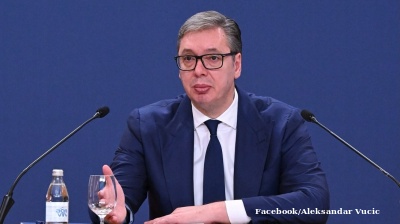The narrative surrounding recent investment trends in Central and Eastern Europe (CEE) hasn’t been bullish, to put it mildly. Gone are the days when Western investors and media sensationalised the ‘east’ as the “next big thing”, that would reap rewards once free market principles and capital rushed in.
While the early 2000s were filled with limitless optimism spurred on by EU and Nato integration, by the late 2010s the upward trajectory softened as these markets became powerhouses in their own right. (UK readers may recall now-PM Keir Starmer’s earlier prediction that by 2030 the average Polish family will be better off than the average British one, as a stunning example of how countries in the region have matured).
The flip side of this maturity has been dwindling foreign investments with, as the IMF recently put it, “soaring wage costs blunting east Europe’s edge”. Take metrics such as incremental fundraising, venture capital funding or private equity investments across CEE: in 2023, all showed an approximate 10-12% year-on-year decline, signalling that both funding and optimism have seemingly dried up. As one banker recently told me, CEE has “lost the dazzle” that once accompanied its emerging status, and investors were now flocking further east, towards Central Asia, the Gulf and beyond.
However, contextualise these numbers within the broader geopolitical and economic landscape and a different picture emerges. Neighbouring wars, the energy crisis, and global economic uncertainties have all taken their toll on investor confidence, but when compared to global trends, the CEE has remarkably held its own.
CEE’s investment resilience
It’s often easy to forget that CEE is on the frontline of the biggest conflict in Europe since WW2, and all the unimaginable consequences this brings. Countries across the region, not least the Baltic states, Poland and Czechia are per capita among the biggest providers of aid to Ukraine.
The region has also been key to accommodating the over 6 million Ukrainian refugees that fled to Europe, especially neighbouring Poland, Romania, Czechia, and Slovakia, sending shockwaves through the domestic housing and labour markets. Then there’s the impact of food and energy security, as well as the influx of cheap Ukrainian grain which disrupts local agriculture.
All of these issues have a non-negligible effect on investor confidence. At its core, proximity to war is a psychological turn-off for investors. A FDI report published by EY earlier this month showed that the war continues to have a significant impact on investment volumes in markets directly bordering either Ukraine or Russia, including Romania (-13%) and the Baltic countries such as Latvia (-31%) and Lithuania (-40%).
The point is that the region’s investment climate over the past two years should be viewed in the context of war on the border; a spasm in an otherwise upward trajectory. For its part, the region is holding together, continuing to provide vital support to Ukraine and finding new opportunities to capitalise on.
What’s more, when the fighting stops, it will serve as a gateway to the trillions of euros in trade and investment that will flow towards reconstructing Ukraine. CEE roads, ports and railways will be front and centre of this mission. And as we’re seeing on the ground, regional investors are already gearing up for what could arguably be the one of the largest undertakings of the 21st century.
Seizing the moment
The green transition is a strong investment theme that the region is looking forward to. 2023 saw renewable energy sources account for 39% of electricity across the CEE region, surpassing coal for the first time. In Poland, Czechia and Hungary, the share of energy from renewable sources has risen between 3 and 4-fold over the last 15 years, and this trend will only continue as financing and technologies catch-up with surging demand.
Additionally, sustainable transport options, such as rail and intermodal terminals, are playing a crucial role in enhancing cross-border connectivity across the region. These developments not only contribute to reducing carbon emissions but also improve the efficiency and integration of regional transportation networks.
Another sector where CEE is not only catching-up, but actively competing with Western Europe is digital infrastructure. As a key driver for growth and connectivity, the region has seen major proliferation of high-speed fibre networks and data centres. The likes of Slovenia, Estonia, Lithuania, Hungary, Bulgaria, Romania and Latvia all remain above the EU average for high-speed internet coverage among households, while CEE as a whole boasts a higher percentage share of the workforce in the ICT sector than Western Europe. These are no longer mere statistics, it’s a sign of trend-setting.
Over the past four years, my team has been mobilising capital across energy, digital, and transport in CEE to bridge the infrastructure gap across the continent. Through the Three Seas Initiative Investment Fund we’ve deployed around €800 million into some of the most exciting projects gripping the region; from leading port hubs on the Black Sea and the biggest rail freight lessor in Poland, to the largest data centre in the Baltics and renewable energy developers active in over 10 CEE countries.
From the ground we can testify that the region is absolutely brimming with opportunities and optimism, and that talks of the region’s ‘blunting edge’ are rather unfounded. The scale of this opportunity stands at over €500 billion: that’s the figure expected to be poured into developing the region’s infrastructure over the next decade.
This is a call to action for forward-thinking investors – local and international – to capitalise on this historic opportunity. The region is on the cusp of significant transformation, with its resilience during recent crises demonstrating a robust foundation for future growth.
Christian Roy is head of Central and Eastern Europe at Amber Infrastructure (investment adviser of the Three Seas Initiative Investment Fund).
Opinion

COMMENT: Sanctions on Rosneft and Lukoil are symbolic and won’t stop its oil exports
The Trump administration’s sanctions on Russian oil giants Rosneft and Lukoil, announced on October 22, may appear decisive at first glance, but they are not going to make a material difference to Russia’s export of oil, says Sergey Vakulenko.

Armenia’s painful reorientation toward the West
Yerevan’s drive to break free from its dependency on Moscow is generating profound internal political turbulence and exposing it to new external risks, says a report by the Central Asia‑Caucasus Institute & Silk Road Studies Program.

COMMENT: Europe’s “fake it till you make it” war approach cannot hold off Russia’s trillion dollar war machine
In their speeches on the war in Ukraine, European leaders appear like a video clip looped on repeat. Standing before the cameras they declare new packages of support for Kyiv and threaten new measures to pressure Russia as if it was still 2022.

A year after the Novi Sad disaster, Belgrade faces one crisis after another
Serbia’s government is grappling with a convergence of crises which threaten to erode President Aleksandar Vucic’s once-dominant position.



